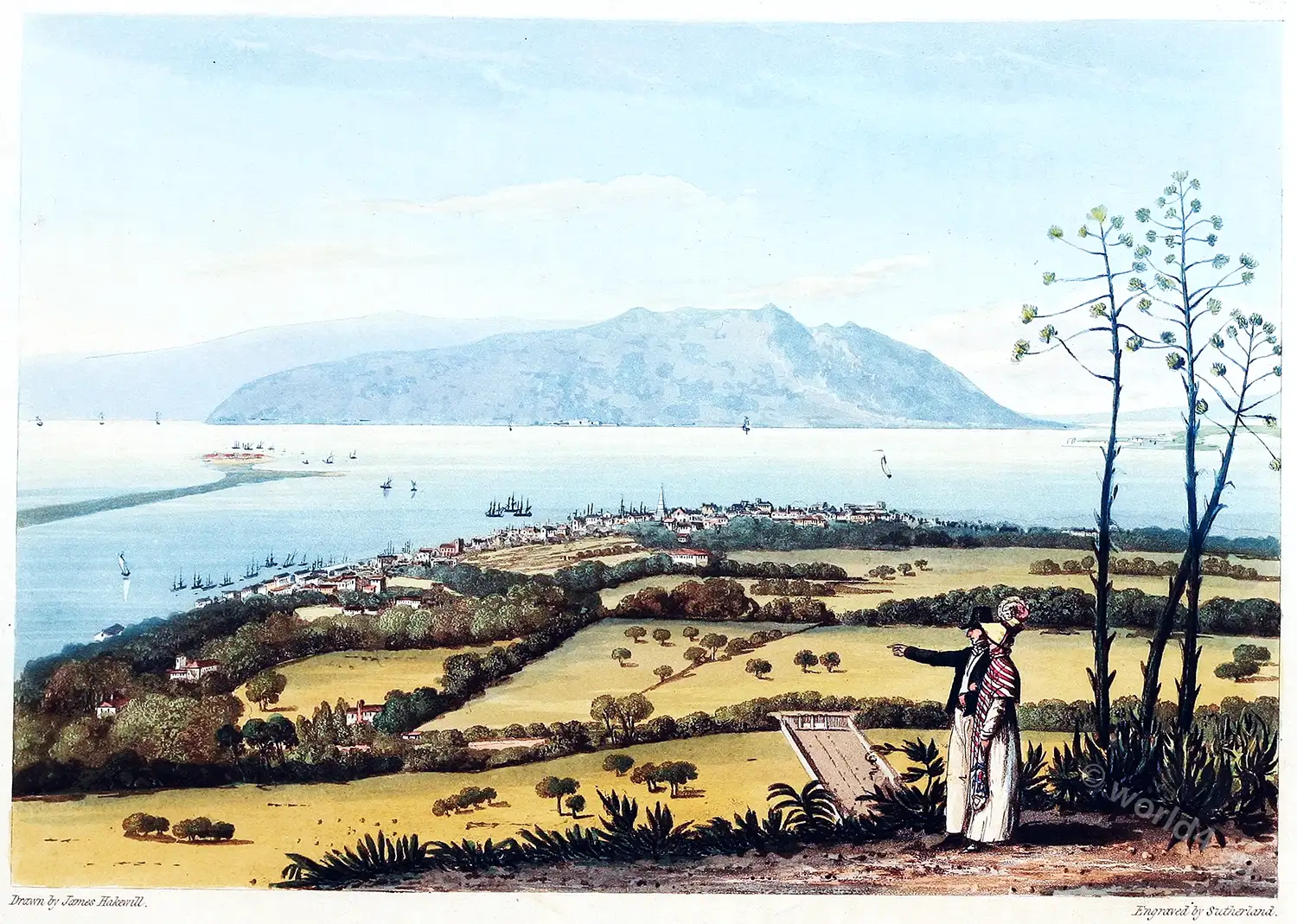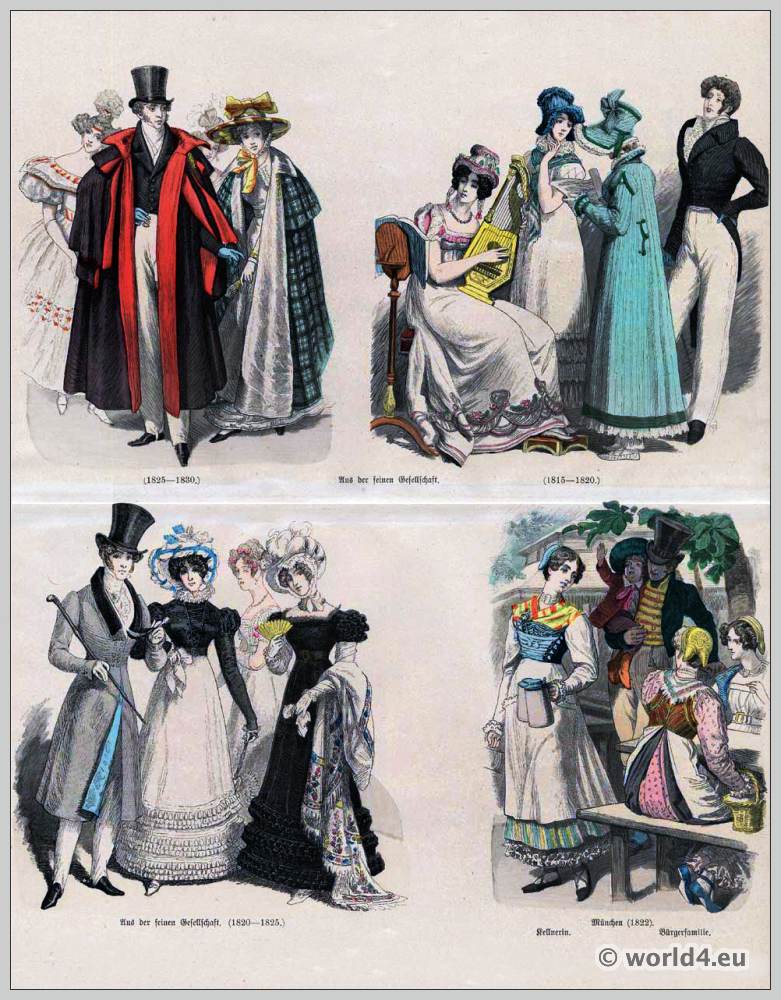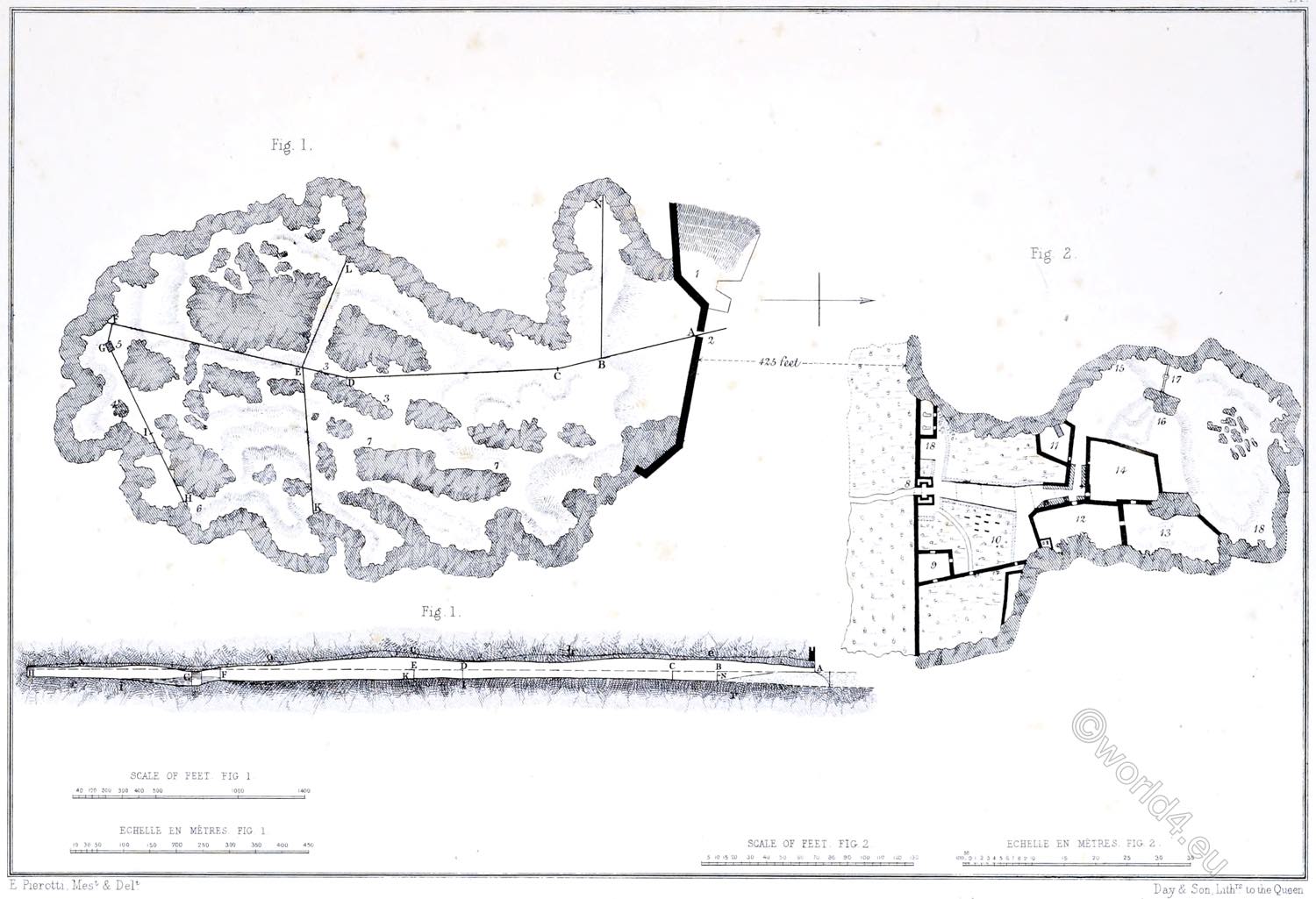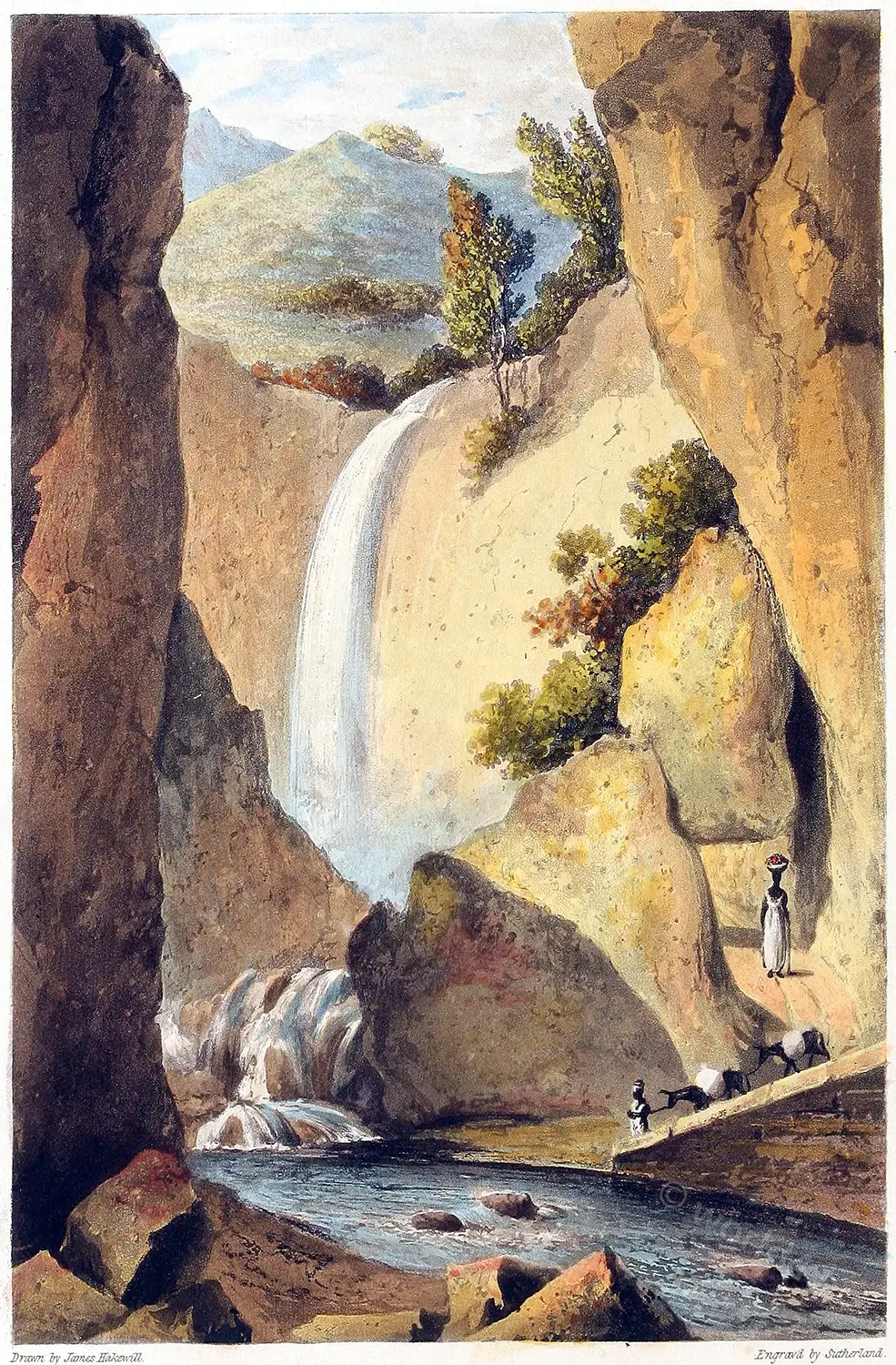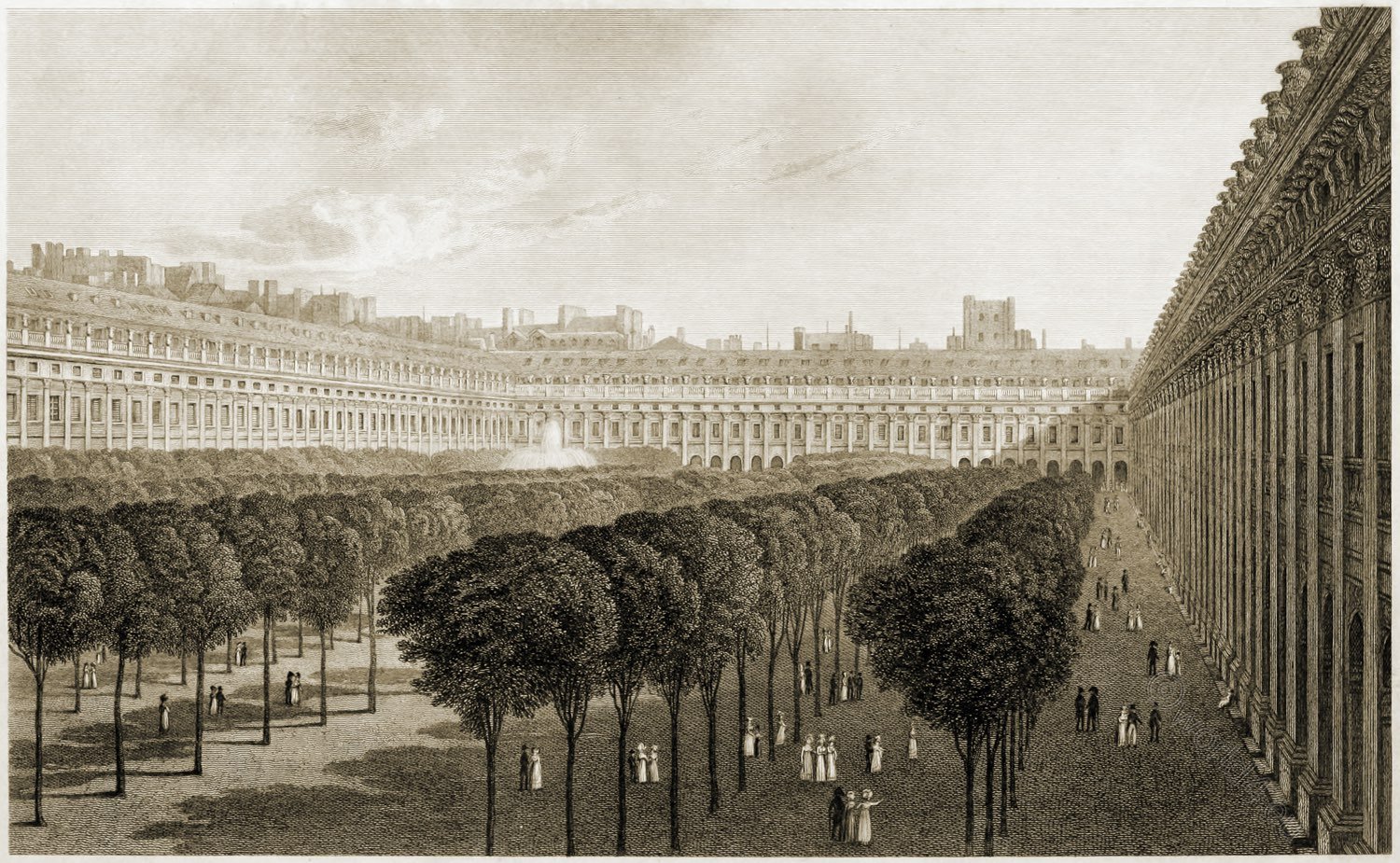KINGSTON AND PORT ROYAL FROM WINDSOR FARM.
The city of Kingston was founded in the year 1693. The plan of it was drawn by Colonel Lilly, an experienced engineer, and in propriety of design it is perhaps not excelled by any town in the world. The plan is a parallelogram, one mile in length by half a mile in breadth, traversed regularly by streets and lanes, alternately crossing each other at right angles, except in the upper part of the town, where a large square is left—but the buildings have now spread much beyond the boundary of the original plans.
The harbour is formed by an inlet of the sea, which after passing Port Royal, divides into two branches : the western, flowing to Passage Fort and the mouth of the Rio Cobre, forms a small bay of shallow water; the eastern branch runs beyond Kingston to Rock Fort, making a course this way of nine miles in length, and in the broadest part, facing which the town is situated, of two miles in breadth. For a considerable way above and below the town, the channel is deep enough to admit ships of the greatest burthen; a thousand sail may anchor here in perfect safety, and the water is so deep at the wharfs, that vessels of 200 tons lie alongside to deliver their cargoes.
At the bottom of the town, near the water-side, is the market- place, which is plentifully supplied with butcher’s meat, poultry, fish, and vegetables. The latter are brought from the Liguanea mountains, andare excellent; the beef is chiefly from the pastures of Pedros, in St, Ann; the mutton from the salt-pan lands in St.Catharine.
The square before – mentioned, at the upper end of the town, is more generally called the Parade. On the south side, forming the N. W. angle of King Street, is the parish church, a plain convenient brick structure, but without any pretensions to architectural beauty; on the north side are the barracks and theatre: the former accommodates about 400 men; the latter will contain about 700 persons; it belongs to the public, and the performers pay into the public funds ten pounds for every night of performance.
But the handsomest building in Kingston is the Scotch Church in Duke Street, which was erected about the year 1814 by a public subscription, from a plan of James Delancy, Esq. It is of an octagon figure, extending eighty-six feet nine inches in the clear, from east to west, and sixty-two feet seven inches from north to south, having four entrances, east, west, north and south, with a portico over each entrance. It is calculated to hold 1,000 persons.
The number of houses paying tax in Kingston are about 1,300; of the untaxed it is difficult to obtain the precise number, but they may be stated at between three and four hundred.
In 1802 the royal assent was given to the act for constituting Kingston a corporation, under the name of the Mayor, Aldermen, and Commonalty of the City and Parish of Kingston. The election of officers took place on the 15th of November.
PORT ROYAL
Is situated on the point of a peninsular, or narrow neck of land, called the Palisadoe, which projecting from the main land about eight miles and three quarters, forms a barrier to the harbour of Kingston against the sea.
The foundation of it was first laid by General Brayne in 1757. It was then called Cagua, a corruption probably of Ceragua, the Indian name for the Coratoe or great aloe, which overspreads the adjacent Salt-pan hill. In 1672 it contained eight hundred well-built houses, and twenty years after the number was increased to two thousand; it had then attained the height of its splendour.
In 1692 it contained upwards of three thousand five hundred inhabitants; the greater number of the houses were of brick several stories in height, founded close to the very brink of the water, on a loose bank of land. The fort, which mounted sixty pieces of cannon, and the rest of the houses, were built on the rocky part of the peninsula.
On the 7th of June 1692, between eleven and twelve o’clock at noon, began that terrible earthquake, which in two minutes produced such a scene of devastation.
All the principal streets which were next the water sunk at once, with the people in them; a high rolling sea follow’ed, closing immediately over them. Not less than sixteen-hundred were thus swallowed up. Some of the streets were laid several fathoms under water, and it stood so high as the upper rooms of those that remained. It is computed that about two thousand whites and negroes perished ; the harbour had all the appearance of agitation as in a storm; and the huge waves rolled with such violence, as to snap the cables of the ships, drive some from the anchors, and overset others.
But the great advantage of the situation again attracted inhabitants, and by degrees, as the popular fears subsided, the town increased in buildings and inhabitants (though far short of its former state) till 1703, when it was destroyed a second time, by fire. This ruinous accident caused another desertion to Kingston, which thus began to thrive by the decline of her elder sister.
Port Royal was at this period reduced to a very low ebb, yet it was not wholly abandoned; it possessed some little trade, and was the favourite resort of the seamen belonging to the men of war and privateers. But what the earthquake and conflagration had spared was nearly demolished by a violent hurricane, which happened on the 28th August 1722. It began at eight in the morning, and lasted fourteen hours. Port Royal, as a place of defence, is deservedly valued.
The ships, in advancing towards the harbour, must necessarily pass between shoals and rocks, through a difficult channel, in some parts extremely narrow; and are inevitably exposed to a severe fire, without the possibility of bringing their guns to bear. Ahead they have a battery of twelve guns, mostly forty-two pounders, called the twelve apostles, built on a point of Salt-pan hill (above the range of an enemy’s shot), which would rake them the whole way, until they tacked to steer up the harbour; they are then exposed to the fire of this battery on one side, to that of the fort on the other, and in front to the battery of Fort Augusta.
The harbour is about one mile and three quarters in breadth, but widens further on. The view is taken from Windsor Farm, the residence of Thomas Higson, Esq., and embraces a part of the city of Kingston, the harbour, Port Royal, and the mountains of St. Catherine.
Source: A picturesque tour of the island of Jamaica by James Hakewill. London: Hurst and Robinson, 1825.

Discover more from World4 Costume Culture History
Subscribe to get the latest posts sent to your email.

